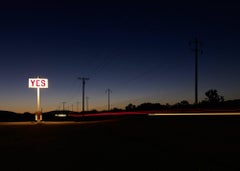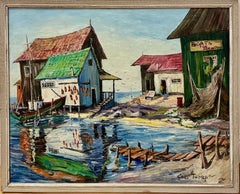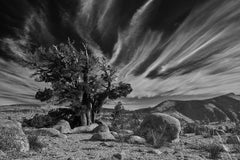San Francisco - Art
21st Century and Contemporary Conceptual San Francisco - Art
Archival Paper, Photographic Paper, Archival Pigment, Giclée
Mid-20th Century Cubist San Francisco - Art
Lithograph
Late 20th Century Op Art San Francisco - Art
Screen
Mid-20th Century American Impressionist San Francisco - Art
Oil
Mid-20th Century American Impressionist San Francisco - Art
Masonite, Oil
21st Century and Contemporary Contemporary San Francisco - Art
Archival Paper, Photographic Paper, Giclée, Archival Pigment, Archival Ink
Mid-20th Century Fauvist San Francisco - Art
Lithograph
2010s San Francisco - Art
Silver Gelatin
Late 20th Century Abstract Expressionist San Francisco - Art
Watercolor
21st Century and Contemporary Contemporary San Francisco - Art
Photographic Film, Photographic Paper, Silver Gelatin
Late 20th Century Modern San Francisco - Art
Offset
21st Century and Contemporary American Realist San Francisco - Art
Bronze
Mid-20th Century Impressionist San Francisco - Art
Oil
Late 19th Century Impressionist San Francisco - Art
Lithograph
Late 19th Century Barbizon School San Francisco - Art
Canvas, Oil
18th Century San Francisco - Art
Canvas, Oil
Late 20th Century American Impressionist San Francisco - Art
Oil
2010s San Francisco - Art
Silver Gelatin
Mid-20th Century Impressionist San Francisco - Art
Oil
21st Century and Contemporary Contemporary San Francisco - Art
Archival Ink, Photographic Paper, Archival Pigment, Archival Paper, Giclée
Late 20th Century Impressionist San Francisco - Art
Oil
Mid-20th Century Realist San Francisco - Art
Etching
21st Century and Contemporary Contemporary San Francisco - Art
Photographic Paper, Archival Pigment, Archival Paper, Giclée, Archival Ink
Artist Comments
A man casts off from a dock in morning sunshine, his reflection softly distorted in the lapping water below. "The fisherman prefers catching fish early in the...
21st Century and Contemporary Abstract Impressionist San Francisco - Art
Oil
Artist Comments
"Tivona" means lover of nature. Nature inspires all of my work, but I saved the title for this one. It is a large, colorful abstract. Fluid acrylics were poured onto a horizontal canvas.
About the Artist
Krispen Spencer...
21st Century and Contemporary Abstract San Francisco - Art
Acrylic
Early 20th Century Impressionist San Francisco - Art
Oil
19th Century San Francisco - Art
Oil
Late 20th Century American Impressionist San Francisco - Art
Lithograph
Late 20th Century Pop Art San Francisco - Art
Lithograph
Late 20th Century Expressionist San Francisco - Art
Lithograph
18th Century Naturalistic San Francisco - Art
Engraving
21st Century and Contemporary Contemporary San Francisco - Art
Archival Ink, Archival Paper, Photographic Paper, Giclée, Archival Pigment
Mid-20th Century Expressionist San Francisco - Art
Aquatint
Late 19th Century San Francisco - Art
Canvas, Oil
Artist Comments
This painting is part of Suren Nersisyan's series of California landscapes focusing on the nature and stunning light around Los Angeles. He draws inspiration ...
21st Century and Contemporary Abstract Impressionist San Francisco - Art
Oil
Late 20th Century Abstract Geometric San Francisco - Art
Screen
21st Century and Contemporary Contemporary San Francisco - Art
Archival Paper, Photographic Paper, Archival Ink, Giclée, Archival Pigment
21st Century and Contemporary Surrealist San Francisco - Art
Giclée
Late 20th Century San Francisco - Art
Canvas, Oil
21st Century and Contemporary Contemporary San Francisco - Art
Archival Ink, Archival Paper, Photographic Paper, Giclée, Archival Pigment
Late 20th Century Folk Art San Francisco - Art
Lithograph
19th Century San Francisco - Art
Bronze
Mid-20th Century Realist San Francisco - Art
Etching
Early 20th Century American Impressionist San Francisco - Art
Watercolor
1970s San Francisco - Art
Canvas, Oil
Mid-20th Century San Francisco - Art
Masonite, Oil
21st Century and Contemporary Contemporary San Francisco - Art
Archival Paper, Photographic Paper, Archival Pigment, Archival Ink, Giclée
1960s Minimalist San Francisco - Art
Paper, Crayon, Graphite
21st Century and Contemporary Contemporary San Francisco - Art
Archival Paper, Photographic Paper, Archival Pigment, Archival Ink, Giclée
Mid-20th Century San Francisco - Art
Oil
1990s Contemporary San Francisco - Art
Paper, Etching, Aquatint
Late 20th Century Abstract San Francisco - Art
Etching, Aquatint
1970s San Francisco - Art
Screen
21st Century and Contemporary Contemporary San Francisco - Art
Canvas, Mixed Media
1980s Other Art Style San Francisco - Art
Paper, Screen
Late 20th Century Modern San Francisco - Art
Lithograph
Mid-20th Century American Impressionist San Francisco - Art
Oil
21st Century and Contemporary Contemporary San Francisco - Art
Photographic Film, Photographic Paper, Silver Gelatin
Early 20th Century San Francisco - Art
Masonite, Oil
Mid-20th Century Realist San Francisco - Art
Watercolor


